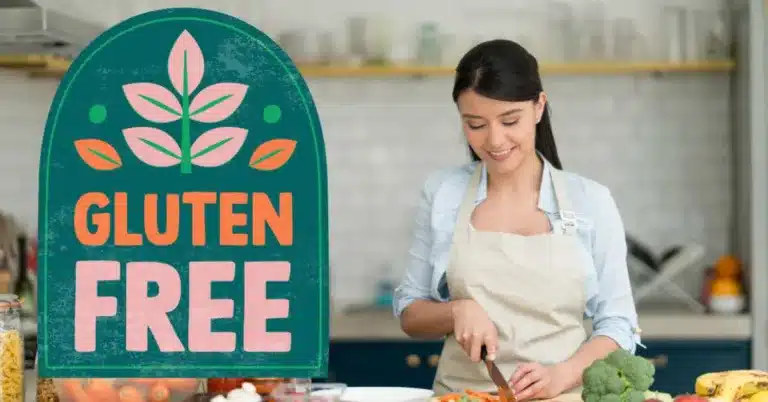Table of contents
Introduction
Embracing a gluten-free lifestyle is crucial for those with celiac disease or gluten sensitivity. This simple quick guide delves into the essentials of gluten-free cooking, covering everything from setting up your kitchen to whipping up delicious recipes.
The Basics of Gluten-Free Cooking
Cooking gluten-free is more than substituting gluten-containing ingredients with gluten-free alternatives. It’s about understanding the process to avoid cross-contamination and ensuring that meals are safe for those with celiac disease or gluten sensitivity.
For more details, see our guide on “Gluten-Free Meal Prep”.
Common Gluten-Free Cooking Mistakes and How to Avoid Them
To make gluten-free cooking smoother and more enjoyable, be mindful of common pitfalls:
- Gluten-Free Flour Alternatives: It’s key to realize that a mix of flours is often necessary for gluten-free cooking and baking.
- Carbs vs. Gluten: It’s important to remember that gluten-free doesn’t mean carb-free. Gluten-free diets exclude certain grains like wheat, barley, and rye but still embrace carb-rich foods such as rice and potatoes.
- Understanding Gluten-Free Flours: Getting to know how various gluten-free flours behave in recipes can help prevent unexpected results.
Kitchen Setup for Gluten-Free Cooking
A gluten-free friendly kitchen setup is vital to prevent cross-contamination:
- Use designated gluten-free zones and utensils.
- Store gluten-free ingredients separately from gluten-containing ones.
Gluten-Free Ingredients and Flours
A variety of gluten-free grains and flours are essential for successful gluten-free cooking:
- Grains: Rice, amaranth, sorghum, and gluten-free oats.
- Flours: Almond meal, chickpea flour, and coconut flour.
Simple Gluten-Free Recipes to Get You Started
Explore easy gluten-free recipes:
- Rice Bowl: A base of cooked rice, topped with sautéed vegetables and grilled chicken or tofu.
- Quinoa Salad: Cooked quinoa mixed with chopped vegetables, lemon, and olive oil.
For more gluten-free cooking inspiration, check out our “Gluten-Free Meal Prep” guide, full of tips and recipes to simplify your dietary transition.
FAQs
Is oatmeal gluten-free?
Yes, but ensure it’s labeled as gluten-free to avoid cross-contamination.
Can I use regular baking recipes and just swap in gluten-free flour?
Not directly. Gluten-free flours often require different quantities and additional binding agents.
How do I prevent gluten-free baked goods from becoming too dry?
Add moistening agents like apple sauce or increase the liquid amount slightly.
Conclusion
By adhering to these guidelines, cooking gluten-free can be a rewarding experience, offering a variety of delicious and safe meals for those needing or choosing to avoid gluten.

